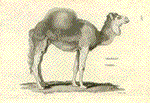Additional Reading
Those desperate to pursue this subject further might consult the discussion of addad in Volume I, Fasicule 3 of “The Encyclopedia of Islam,” published by Luzac in 1954; also Karl Abel's Über den Gegensinn der Urwörte, in Sprachwissenschaftliche Abhandlungen, published in 1885. Both touch on enantiosemia, words compounded of antithetical parts. Ancient Egyption, for example, has “strong-weak,” “command-obey,” “young-old,” “near-far,” “cut-bind,” “inside-outside,” and so on. We call them oxymorons – sophomore, “wise fool,” being a familiar example. Sigmund Freud's review – along Freudian lines, naturally – of Abel is found in Volume II, page 155 of the Standard Edition of his “Complete Psychological Works”: it attracted sharp criticism from Emile Beneviste. Noldeke's Wörter mit Gegensinn (Addad), Neue Beitrage zur semetischen Sprachtwissenschaft, Strasbourg, 1910, considers 177 addad, noting parallel roots in Amharic, Aramaic and Hebrew.

